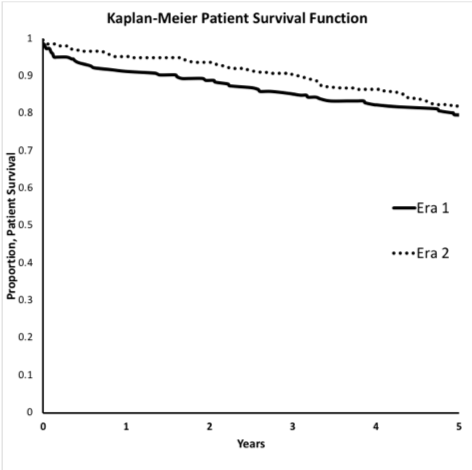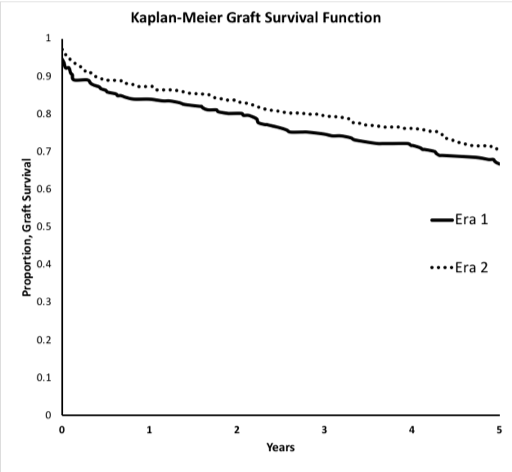Temporal Trends Following Uncontrolled Donation after Cardiac Death Kidney Transplantation: Implications for Normothermic Regional Perfusion?
Transplant Surgery, University of Colorado, Aurora, CO
Meeting: 2019 American Transplant Congress
Abstract number: B141
Keywords: Donation, Donors, non-heart-beating, Kidney, Kidney transplantation
Session Information
Session Name: Poster Session B: Kidney Donor Selection / Management Issues
Session Type: Poster Session
Date: Sunday, June 2, 2019
Session Time: 6:00pm-7:00pm
 Presentation Time: 6:00pm-7:00pm
Presentation Time: 6:00pm-7:00pm
Location: Hall C & D
*Purpose: Kidney transplantation following uncontrolled donation after cardiac (uDCD) remains an underutilized resource in the United States when compared to controlled DCD (cDCD) which has increased in contrast. UDCD kidney allografts experience longer periods of total warm ischemia time as opposed to cDCD allografts which experience primarily functional warm ischemia. It is unclear whether innovations over the past three decades in cDCD procurement have also resulted in improvements in outcomes following uDCD kidney transplantation.
*Methods: From January 1990 to January 2018, OPTN/UNOS database was queried to discover all reported cases of uDCD kidney transplantation. Two groups were created, Era One (1990-2005) and Era Two (2005 – 2018) based on date of transplant. Baseline characteristics of transplant recipients were noted as well as rates of primary non-function, delayed graft function, and overall graft and patient survival. Graft and patient survival were assessed with Cox-regression models.
*Results: During Era One, 218 uDCD kidneys transplants were performed, as compared to 380 in Era 2. Rates of primary non-function did not change over time (4.1% [Era 1] vs. 3.9% [Era 2], P<0.001). Rates of delayed graft function also were similar over time (50.9% [Era 1] vs. 52.2% [Era 2], P=0.08). Both five year graft (66.3% [Era 1] vs. 70.3% [Era 2], P=0.52) and patient survival (79.7% [Era 1] vs. 80.9% [Era 2], P=0.87) were also similar over time.
*Conclusions: Although temporal improvements in graft and patient survival have been well documented following cDCD kidney transplantation, such improvements are not evident following uDCD transplantation. It is likely that differential ratios of total/functional warm ischemia time during the procurement process between cDCD and uDCD plays a significant role in these findings. Normothermic regional perfusion is a burgeoning technological innovation which may aid transplant providers in both mitigating some effects of total warm ischemia and also help determine which uDCD kidney allografts are suitable for transplant.
To cite this abstract in AMA style:
Choudhury RA, Prins K, Yoeli D, Moore HB, Nydam TL. Temporal Trends Following Uncontrolled Donation after Cardiac Death Kidney Transplantation: Implications for Normothermic Regional Perfusion? [abstract]. Am J Transplant. 2019; 19 (suppl 3). https://atcmeetingabstracts.com/abstract/temporal-trends-following-uncontrolled-donation-after-cardiac-death-kidney-transplantation-implications-for-normothermic-regional-perfusion/. Accessed January 7, 2026.« Back to 2019 American Transplant Congress


